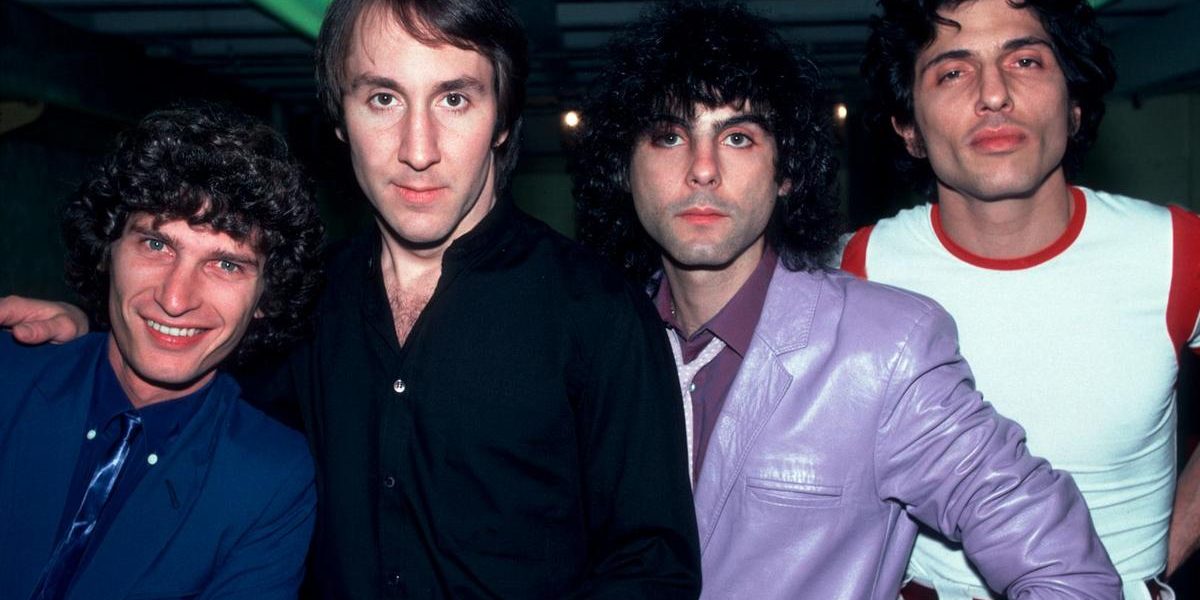What ultimately happened to The Knack, the iconic late ’70s one-hit wonder that seemingly ruled the music scene with their breakout hit “My Sharona“? This question lingers in the hearts of music enthusiasts, as the band rose to fame only to face the unpredictability of the music industry.
Unveiling The Knack and the Phenomenon of “My Sharona”
The Knack burst onto the music scene in Los Angeles in 1978, spearheaded by the charismatic singer-guitarist Doug Fieger. He was joined by a talented ensemble that included lead guitarist Berton Averre, bassist Prescott Niles, and drummer Bruce Gary. Their debut album, Get the Knack, was released on June 11, 1979, with “My Sharona” hitting the airwaves just a week later on June 18.
The track skyrocketed to the coveted No. 1 position on the Billboard Hot 100, where it captivated listeners for an impressive six weeks. Furthermore, it earned the distinction of being named the top song of 1979 by Billboard magazine in their annual chart, reflecting its immense popularity. At that time, it became Capitol Records’ fastest-selling single since The Beatles‘ “I Want to Hold Your Hand” in the 1960s, ultimately achieving over 10 million copies sold worldwide.
The inspiration for this legendary song came from Fieger’s youthful romance with his then 17-year-old girlfriend, Sharona Alperin. Their blossoming relationship sparked a creative surge, leading Fieger to embark on a prolific two-month songwriting spree.
In the album’s liner notes, Fieger reminisced, saying, “It was like getting hit in the head with a baseball bat; I fell in love with her instantly. And when that happened, it sparked something, and I started writing a lot of songs feverishly in a short amount of time.” This intense creative process underscored the connection between music and personal experiences.
Remarkably, the track was composed in a mere 15 minutes, followed by an equally swift mixing process. This efficiency showcases the raw talent and inspiration that defined The Knack’s early days.
Fieger and Alperin enjoyed a four-year romantic relationship, even reaching the engagement stage at one point. However, they never tied the knot. In a heartfelt revelation in 2005, Fieger mentioned that they had maintained a strong friendship over the years, highlighting the enduring connection formed during their youth.
Experience The Knack’s Timeless Hit “My Sharona”
Exploring The Knack’s Journey After the Success of “My Sharona”
“My Sharona” catapulted The Knack into instant stardom, propelling their debut album, Get the Knack, to the top of the Billboard 200 Album chart. Despite the label of being a “one-hit wonder,” the second single from the album, “Good Girls Don’t“, actually performed quite well, peaking at No. 11 on the Billboard Hot 100.
However, as is often the case with meteoric rises to fame, The Knack faced significant backlash. Much of the criticism stemmed from their marketing strategy. The album title, Get The Knack, along with its cover art, bore striking similarities to that of The Beatles. Coupled with their retro sound and imagery, the band found themselves often labeled as a Beatles imitation.
Fieger acknowledged these comparisons, admitting that their intention was to capture the essence and excitement of the British Invasion era and present it to a new generation. However, the aggressive marketing strategy led many to perceive them as a manufactured band, and their limited public presence through interviews or television appearances only reinforced this notion.
The Knack also faced backlash regarding a perceived misogynistic attitude towards women, with several women’s rights groups protesting against the band’s views on romance. This negative perception further complicated their public image.
Meanwhile, San Francisco artist Hugh Brown initiated a campaign called “Nuke the Knack,” protesting the overexposure of “My Sharona” on radio stations. “They were so over-hyped; I thought I’ll do something that’s kind of obnoxious and kind of funny,” Brown explained in the Getting the Knack documentary. “Then it just snowballed,” highlighting the band’s controversial standing in the industry.
The Knack’s Struggles After Their Breakthrough Album
The backlash proved to be a formidable challenge for The Knack to overcome. Their sophomore album, …But the Little Girls Understand, released in 1980, struggled commercially, peaking at a disappointing No. 15 on the Billboard 200 Album Chart. The lead single, “Baby Talks Dirty“, barely made a mark, reaching No. 38, while the follow-up single, “Can’t Put a Price on Love“, stalled at No. 62 on the Billboard Hot 100.
The situation worsened with the release of their third album, Round Trip, in 1981, which performed even more poorly, peaking at No. 93. The single “Pay the Devil” only reached No. 67. Internal tensions within the band escalated during the album’s touring phase, ultimately leading to Fieger’s departure from the group on New Year’s Eve.
In the aftermath of Fieger’s exit, The Knack attempted to continue under the new name The Game, featuring new lead singer Stephen ‘Mac’ McNally, while Fieger formed a new band called Doug Fieger’s Taking Chances.
The Knack’s Resurgence and Later Years
After disbanding in 1982, The Knack briefly reunited in 1986 for a performance organized by a talent booker who had initially booked them back in 1978. This reunion led to a series of additional performances, although Bruce Gary left the band in 1989.
By 1990, the remaining members signed a new record deal, embarking on a fresh chapter in their music career. They released Serious Fun in 1991, with the single “Rocket of Love” receiving moderate airplay on AOR radio in the U.S. and charting in Canada.
However, following the dissolution of their record label in 1992, the band faced another split. The Knack saw a revival when “My Sharona” was featured in the soundtrack of the film Reality Bites. This resurgence led to an appearance on the Tonight Show and reignited the band’s creative spirit as they began working on new music for a 1996 compilation album, covering Badfinger's “No Matter What“.
READ MORE: Discover the Fate of 1990s One-Hit Wonder, Harvey Danger
In the years that followed, The Knack continued to record and collaborate, releasing Zoom in 1998 and Normal as the Next Guy in 2001. However, tragedy struck in 2006 when Fieger experienced disorientation during a performance in Las Vegas. Following medical evaluations, he was diagnosed with two brain tumors, which ultimately affected his health.
Although he underwent surgery and managed to return to performing, ongoing health challenges plagued him for years. Fieger passed away on February 14, 2010, after a courageous battle with both brain and lung cancer, marking a somber end to The Knack’s legacy.
The Fate of The Other Talented Members of The Knack
Following their initial split, the remaining members of The Knack formed a band called The Front, with actor Steven Bauer taking on vocal duties. Outside of their work in The Knack, drummer Bruce Gary emerged as a sought-after session musician, contributing to recordings for famed artists such as Bob Dylan, George Harrison, Bette Midler, Sheryl Crow, Albert King, and John Lee Hooker. In addition to his session work, Gary served as a producer, overseeing projects for The Ventures and co-producing archival recordings of Jimi Hendrix. Tragically, he passed away in 2006 at the age of 55 due to lymphoma.
Berton Averre continued his musical journey beyond The Knack, becoming a vocal arranger and delving into musical theater during the 1990s. He co-wrote productions such as The Party’s Over, Jungle Man! and Robin Hood: The Untold Story, along with co-writing 2009’s Setup and Punch and 2011’s Vrooom!.
Prescott Niles has spent the past decade performing with the ’80s rock band Missing Persons and collaborating with Mike Pinera’s Classic Rock All-Stars.
Exploring the Top Songs from 10 Iconic 1970s One-Hit Wonders
While you may know the most popular tracks, are you familiar with the others? These bands did not intend for a single song to define their careers. Discover more about their musical journeys.
Gallery Credit: Chad Childers, Loudwire

Here you can find the original article; the photos and images used in our article also come from this source. We are not their authors; they have been used solely for informational purposes with proper attribution to their original source.





